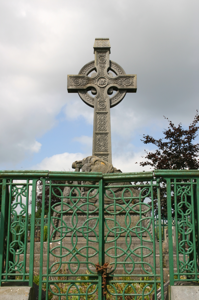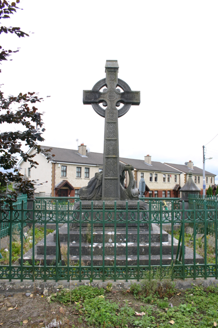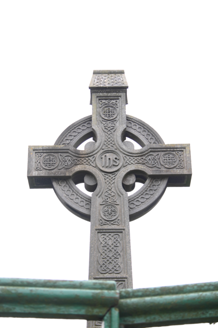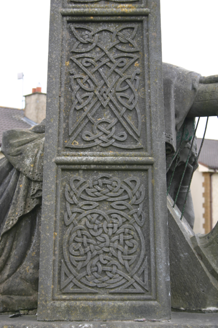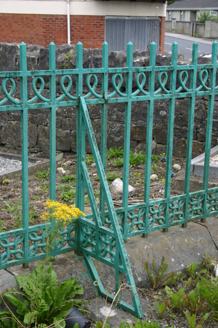Survey Data
Reg No
21522005
Rating
Regional
Categories of Special Interest
Architectural, Historical
Original Use
Monument
In Use As
Monument
Date
1885 - 1890
Coordinates
158945, 156184
Date Recorded
24/07/2005
Date Updated
--/--/--
Description
Freestanding funerary monument, erected 1887, forming a memorial to Irish nationalism, executed in the Celtic Revival idiom, comprising a broad sarcophagus-like plinth which stands on a limestone podium, and supporting a Celtic cross with Celtic-inspired strap and knot-work to faces, and having romanticised kneeling female figure in classical dress (the personification of Éire), leaning on a Celtic harp (symbol of Irish freedom), which rests on its side, and a seated Irish Wolf Hound. One plaque reads: This memorial was erected by the nationalists of the city and county of Limerick in memory of the martyrs Allen Larkin and O'Brien who were executed at Manchester November 23.1867 GOD SAVE IRELAND. Another plaque reads in raised limestone lettering: Surrounded by foemen midst jeering and hate True as steel to the last they went forth to their fate with a prayer for the cause on the high gallows tree Dear home of our fathers they perished for thee. Inscription to base reads: F. Kennedy. Monument located within grounds of Mount Saint Lawrence’s Cemetery, located at junction of Old Cork Road and spur leading to Ballysimon Road. Surrounded by Celtic Revival cast-iron rail panels on limestone plinth base terminating with limestone ashlar piers with ogee finials, linked to rubble limestone cemetery boundary wall. Gates leading from public road and from cemetery.
Appraisal
This monument is an interesting, albeit misty-eyed, evocation of the romantic sentiment associated with Irish nationalism in the visual arts in Ireland towards the end of the nineteenth century. Following the execution of the three men, memorial Celtic crosses were erected in cemeteries. Most of the Manchester Martyrs memorials were distinguished by their size. Here is was placed at the side of the cemetery. It was erected by Kennedy, a local mason.

